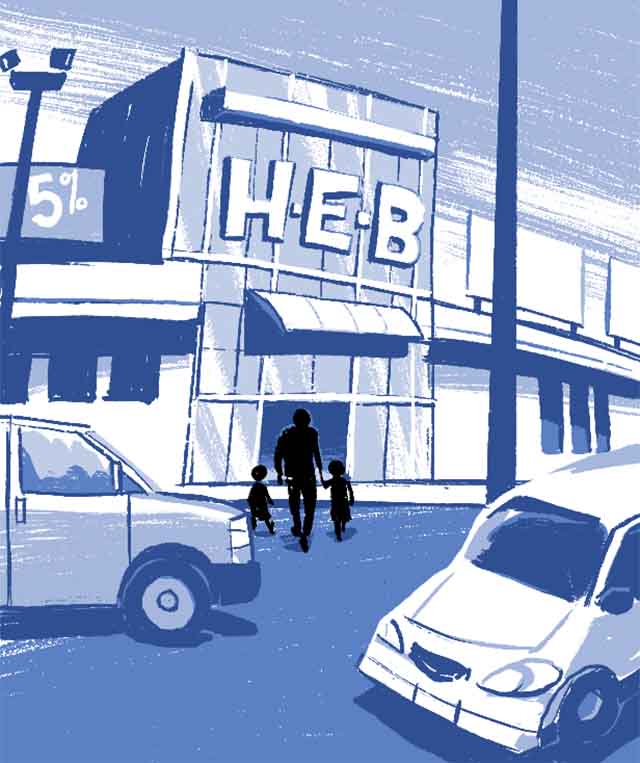
It was just a regular run to the store with his children.
But as he turned from the shelves, a bolt of terror struck. There, in the aisle, stood the man who had abducted him months before.
 (It was) like nothing happened. The guy who kidnapped me just said:
(It was) like nothing happened. The guy who kidnapped me just said:
Hey, man!
Don't be mad, man, I didn't kill you.
As a newspaper reporter in Reynosa, a city of some 700,000, González never thought he would face his kidnapper again.
But here the man was, demanding the password to the journalist’s iPad.
Not knowing what to do, González gave it up. He recalls feeling shocked, powerless. Worst of all was the dread of knowing the kidnapper had seen his daughters’ faces.
About this story
Every 12 hours, a Mexican journalist is threatened. Decades of impunity in states rife with organized crime have made the country among the most dangerous for news media. And though Mexico’s government has an official system to protect journalists — known as the Mechanism — it doesn't go far enough.
The encounter took place just a few months after González went levantado, a Mexican term to describe a journalist who’s been abducted — and often threatened and beaten — for covering a story someone didn’t like.
“A vehicle with armed people approaches you. … They intercept you and put something over your head so you can’t see. They put you in a vehicle, and from there, you disappear,” González told VOA from his office at El Mañana de Reynosa. “On some occasions, (family and the police) can find you, and in others, no one is able to find you.”
Mexico’s journalists live with the ever-present risk of becoming a victim of violent crime. The country is the most dangerous for journalists in the Western Hemisphere, media groups say, with reporters threatened, kidnapped and assaulted — and even killed — during a day’s work.
A climate of impunity exacerbates the danger, experts say. González reported his attack to the police, but no one has been brought to justice.
Overall, Mexico is the sixth-worst country in the world for prosecuting journalists’ killings, according to the Committee to Protect Journalists (CPJ). Mexico ranks just below Somalia, Syria and Afghanistan, but in those countries, war and mass unrest block justice.
Mexico has taken steps to address the problem. In 2012, it established the Federal Mechanism for the Protection of Human Rights Defenders and Journalists to support and shield journalists under threat. But while the safety program looks great on paper, journalists say it doesn’t reduce their chances of being threatened or grabbed off the street.
In June, Gustavo Sánchez Cabrera — a reporter enrolled in the Mechanism — was shot dead in front of his teenage son in Oaxaca state.
“We know of plenty of cases where journalists incorporated in the Mechanism are dealing with emergencies, such as shootouts in front of their home, the feeling of being followed, receiving threats, and the Mechanism simply does not respond,” Jan-Albert Hoosten, CPJ’s Mexico representative, told VOA. In some cases, such as that of Gustavo Sánchez, this can have deadly consequences.”
Reynosa journalist González has been under the Mechanism for nearly four years. He still receives anonymous threats. In January, some unidentified people in a car were spotted taking photos of his home and the building where he works.
Those most at risk of levantado are journalists investigating corruption, politics, or security and justice, particularly in cities close to Mexico’s border with the U.S., said Pedro Cárdenas Casillas, protection coordinator at Article 19, a free-speech group.
“Every 12 hours a journalist is threatened,” said Cárdenas as he described the weight of data and calls to Article 19. “Let us remember that in Mexico, murders are an ongoing situation.”
Reynosa, in the border state of Tamaulipas and just a few miles from Texas, is considered one of the most dangerous cities in Mexico.
The region has a reputation for savage violence spurred by organized crime and rival gangs fighting over drugs and human trafficking routes. Kidnappings and gruesome murders are common. Gunmen in June killed 14 people in one day, including taxi drivers and a student. And in September police were analyzing remains found in the outskirts of Reynosa.
During the summer of 2021, the U.S. State Department issued a “Do Not Travel” advisory for Tamaulipas, warning of “organized crime activity — including gun battles, murder, armed robbery, carjacking, kidnapping, forced disappearances, extortion, and sexual assault.”
“Heavily armed members of criminal groups patrol areas of Reynosa to Nuevo Laredo,” the advisory said.
Despite the usual dangers, the day that González was abducted — May 11, 2018 — should have been routine. He was assigned to cover a story: Some bags containing body parts had been found in a parking lot in Rio Bravo, a town just outside Reynosa.
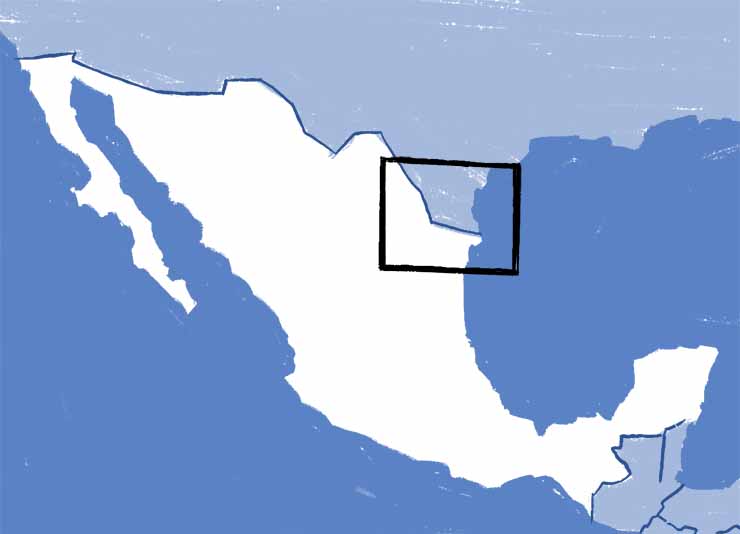
United States
Mexico

Rio Bravo
Reynosa
Monterrey
Gulf of America
United States
Mexico
Men blindfolded him and dragged him into one. A short drive later, they pushed him out and asked him to unlock his phone.
“Who sent you?” one of the abductors demanded.
“No one. I work for the newspaper,” González said.
González couldn’t tell how many men were present, but several voices demanded again to know who he worked for and whether he was an informant for a rival gang.
“They beat me. They hit in me in the head, and I lost consciousness,” González said, his voice tinged with anger.
Later, I regained consciousness and I was near a cliff, with a gun on the back of my head.
Later, I regained consciousness and I was near a cliff, with a gun on the back of my head.
I could hear the trigger being pulled, but for some reason it didn't work.
I could hear the trigger being pulled, but for some reason it didn't work.

His abductors demanded proof that he was a journalist.
“Let me make a call,” González said.
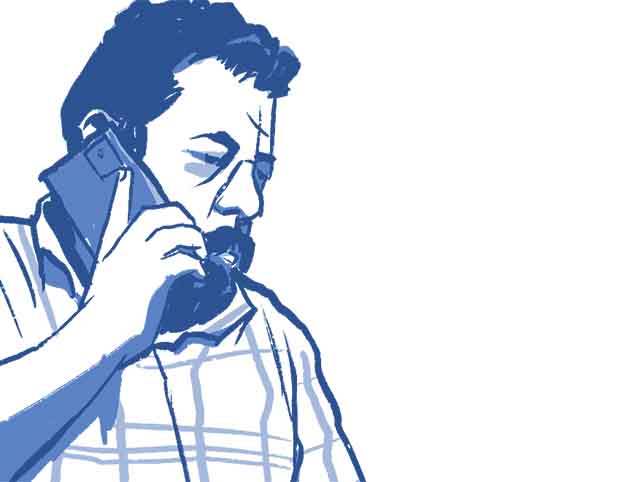
When handed his phone, González called the head of police in Rio Bravo.
This is Jésus Humberto. I'm levantado.

I explained the situation, and five minutes later they stopped hitting me and are driving me back.

Eight hours after being grabbed, González was left at a gas station.
Eight hours after being grabbed, González was left at a gas station.
If we had wanted, we would have killed you.
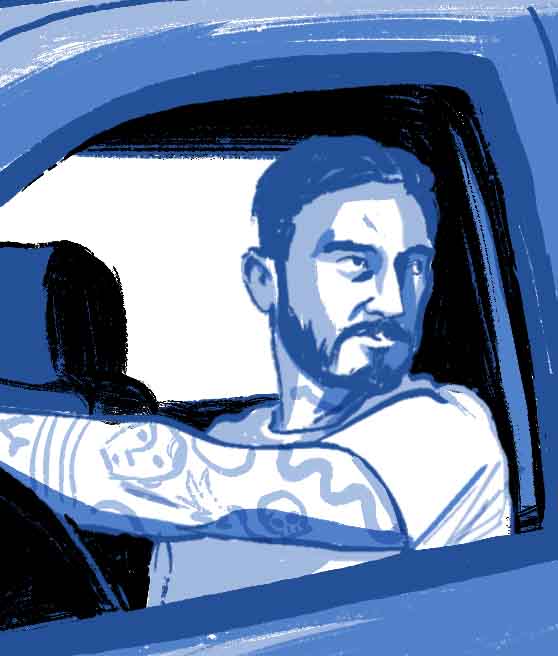
If we had wanted, we would have killed you.
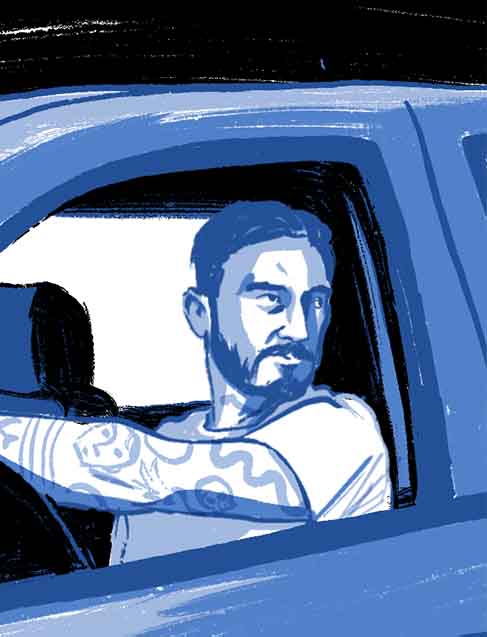
González reported his case to the Mechanism. Besides offering protection, the Mechanism is charged with advocating public policy that promotes the safety of media and human rights workers.
“The Mechanism is an extraordinary measure,” its director, Enrique Irazoque Palazuelos, told VOA in Mexico City. “We act in a very simple, very practical way.”
“We are connected with any journalist, any human rights defender, by phone, by email, via WhatsApp. The truth is that this doesn’t limit our actions when identifying a risk and providing the corresponding protection.”
The Mechanism does not have power to investigate or prosecute crimes. Instead, it tries to reduce the odds of further attacks.
The agency runs a network of about 70 safe houses across Mexico that reporters and their families can use if needed. It also provides panic buttons so journalists can summon help during emergencies.
There is no limit to how long protection lasts — journalists remain enrolled for as long as they feel at risk. A caseworker checks every six to nine months. To be eligible, an individual must be under a real threat, and the threat must be work-related.
Despite all that, the security offered is often meager or ineffective, journalists say. And for years, rights groups including CPJ and Reporters Without Borders (RFS) have flagged that journalists in need of immediate protection remain at risk or in some cases are killed before measures could be provided.
CPJ’s Hootsen has spoken in numerous interviews of how the Mechanism is understaffed, underfunded and failing to uphold its mandate to protect.
“When it comes to the federal Mechanism in Mexico, the problems are legion, ranging from simple operational problems to more structural issues,” Hootsen told VOA. “There appears to be very little in terms of oversight and sanctions when the Mechanism fails its basic duties, even though they are failing their legal obligations.”
Funding problems persist. While the number of those enrolled has risen, the staff managing the cases remains at around 40. That, Hootsen said, “isn’t even close to enough to handle the myriad threats and violence journalists are facing.”
Irazoque Palazuelos concedes that the Mechanism has some shortcomings. Between December 2018 and October 2021, 47 journalists and 94 human rights defenders had been killed, he said. Some were enrolled in the Mechanism.
The Mechanism uses a different set of criteria to track killings than media rights groups like CPJ, which counts only cases where journalism was the motive.
Still, since the administration of President Andrés Manuel López Obrador began in 2018, the requests for protection have risen 88%, data released by the Mechanism in October show. The rise is largely due to threats from drug cartels and organized crime, reporters say.
Who’s protected
1,506
Journalists and human rights defenders under federal protection
495
Journalists currently under protection
136
Female journalists
356
Male journalists
Over 50%
of media cases are in just 5 states and the capital, Mexico City: Mexico City (76)
Guerrero (56)
Tamaulipas (46)
Quintana Roo (41)
Sonora (26)
Veracruz (26)
Source: Federal Mechanism for Protection of Human Rights Defenders and Journalists
Of the 1,506 individuals currently enrolled, 495 are journalists.
“The Mechanism was not created to solve the problems of structural violence of a state or a region in the country,” Irazoque Palazuelos said. The problem, he said, has less to do with the Mechanism and more to do with “not having a national policy in which all authorities assume our responsibility.”
Perla Resendez Lopez, a journalist, is enrolled in the Mechanism but doubts its effectiveness. She covers crime for the newspapers El Financiero and Expreso in Ciudad Victoria, also in Tamaulipas.
The state accounts for 46 media cases under the Mechanism, and rights groups, including CPJ, have said media there report regular threats from organized crime.
Resendez Lopez first enrolled in the Mechanism in 2012, after a car bomb exploded outside the Expreso offices. No one was killed, but the device damaged the building and nearby cars.
In 2018, the paper was targeted again.
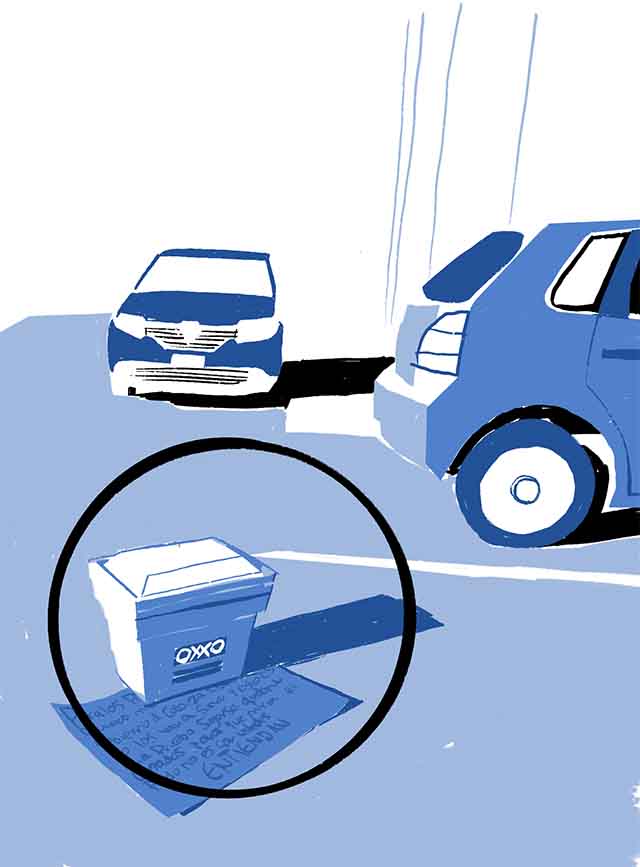
A box containing a human head was left behind Lopez's SUV in the paper's parking lot, along with a note: “Continue to be quiet.”
Resendez Lopez, a police and security reporter for most of her career, said she tries to keep a low profile on social media, not sharing too much. But she still receives threats.
“I don’t think the Mechanism works. I did it because I don’t want to be just a number. I know the risk that I take with my job, but for me it is something that does not work,” she said. “They give you like a panic button and a small phone, where you can make calls.”
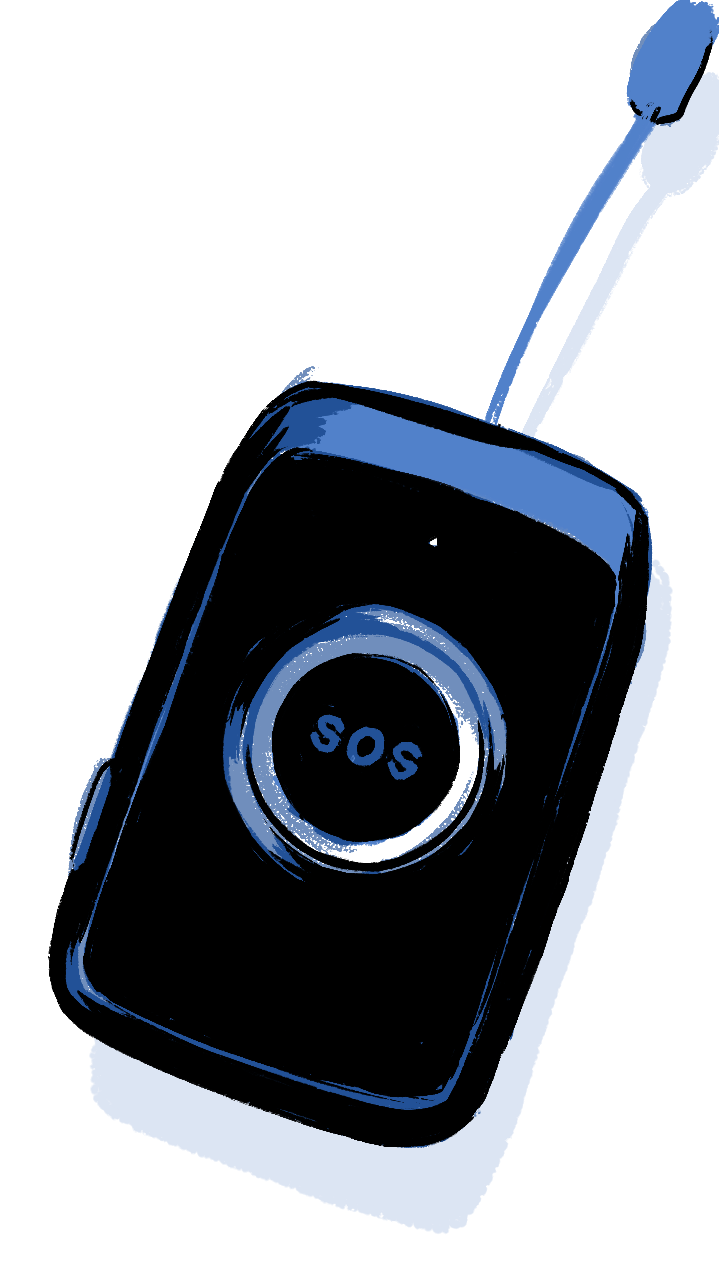
González has tried to use the panic button — to no avail.
 It does not work; you can press it, and it takes too much time, or they don't respond
It does not work; you can press it, and it takes too much time, or they don't respond
González also requested surveillance cameras for his home, but said the Mechanism turned down the request.
Irazoque Palazuelos said his agency plans to make the system more robust.
Part of the plan is to collaborate with other countries that have similar systems. Mexico plans to hold meetings with Brazil, Colombia and Honduras to share ideas and create a regional plan.
Meanwhile, journalists are left weighing the risks of reporting.
Journalists murdered in Mexico (2012-2021)

Source: CPJ
Between 2012 and 2021, at least 31 journalists were killed as a direct result of their work in Mexico
Data from CPJ
84%
Received threats before being killed. (CPJ)
16%
Were held captive before being killed. (CPJ)
16%
Were tortured before being killed (CPJ)
At least five journalists killed since 2018 were enrolled in the Mechanism.
(CPJ)
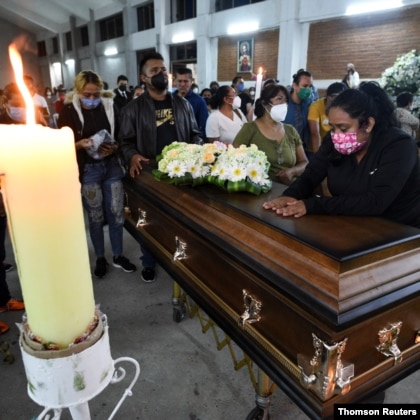
Friends, family and colleagues mourn Jacinto Romero Flores, one of the most recent victims of Mexico’s dangerous media environment. The radio journalist was killed in Veracruz state in August 2021. (Reuters)
González, who has worked as a journalist for two decades, remains in Reynosa covering crime, deaths and accidents. “I have dedicated myself to keep working, but I do have to admit that I do sometimes self-censor for safety and my family,” he said.
Running into his kidnapper was a frightening reminder of his vulnerability. Part of it is not knowing why their paths crossed again.
Was he being followed, he wonders? Or was his attacker just doing his shopping?
“I have missing colleagues, and it’s something that still hurts a hell of a lot, because everyone thought I was dead,” González said.
“That still haunts me — all the time.”







